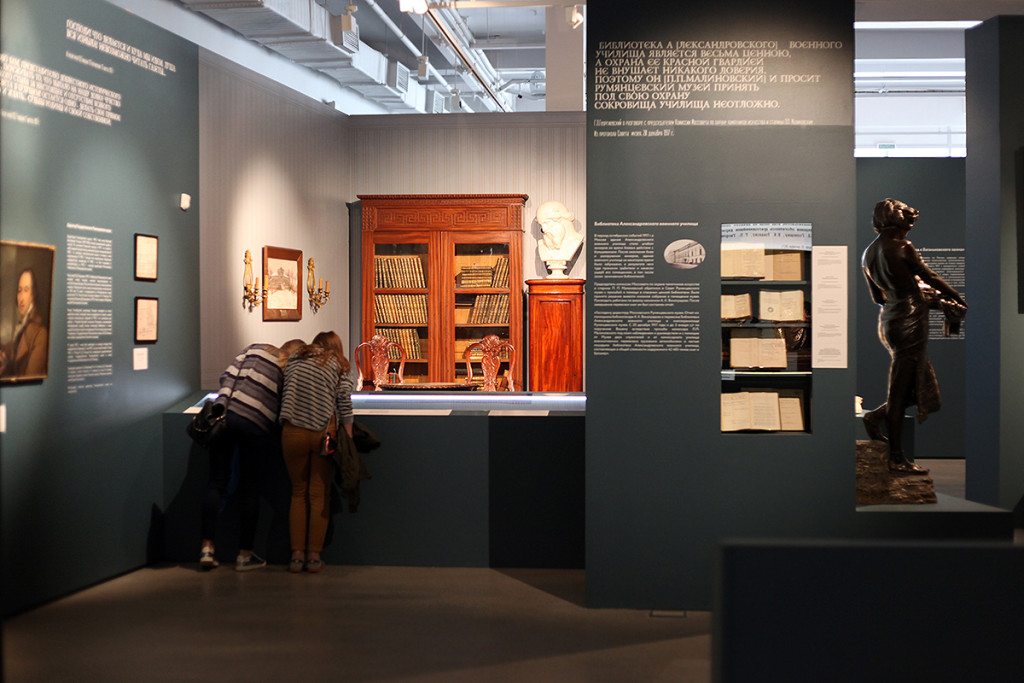About Ivanovsky hall

Ivanovsky hall
Entrance fee: 200 rubles for adults, 50 rubles for schoolchildren, students and multiple children family members
Entrance is free for privileged categories of citizens, including children under 16 years (for details see
Price schedule
)
Address: Entrance from Starovagankovskiy Lane, Building 7, Vozdvizhenka Str. 3/5, Moscow
Phone:
Opening Hours:
Monday: closed
Tour Cost: 500 rubles per person.
Tour Desk phone number:
Reconstruction and modern methods of Museum design have turned the old building into a modern conceptual art space, organized in a way to make the journey through the exhibition interesting and enjoyable. The premises are equipped with multimedia stands, and there is a small reading room on the second floor where you can flip through and read the books exhibited in Ivanovsky Hall.
As part of the original exhibition projects you can see here the treasures from the collections of the Russian State Library: rare books, unique manuscripts, old maps, engravings, visual art materials and, of course, artefacts that have remained in the Library since Rumyantsev Museum and from the Soviet times. On a tour on Ivanovsky hall you can get acquainted with its history and see the exhibits of the current exhibition.
Historical Information
The largest gift of the Emperor was the famous painting of the recently deceased artist Alexander Ivanov ‘The Appearance of Christ to the people’ — a giant canvas and sketches for it, especially purchased for the Rumyantsev Museum from the heirs of the artist for 15 thousand rubles in gold.
The art collection of the Rumyantsev Museum was quickly replenished, and at the beginning of the 20th century a
In 1924, the Commission of the General Department of scientific, art and Museum institutions started to work in Pashkov house on elimination of the Rumyantsev Museum. In a small note in Izvestiya Newspaper it was said:«The Commission should release the Pashkov estate for its occupation by the Lenin Library» — there was the new name of the Library of the Rumyantsev Museum. The Lenin Library became the main book Depository of the country, and it was decided to donate the rest departments of the Museum, including the art gallery, to the Library for placement of its holdings.
In the early 1930s, the Ivanovsky hall was closed, and the giant canvas, together with 228 sketches, was moved to the Tretyakov gallery, which already hosted the large and, according to experts, the best part of the collection of Russian paintings from the Rumyantsev Museum.



